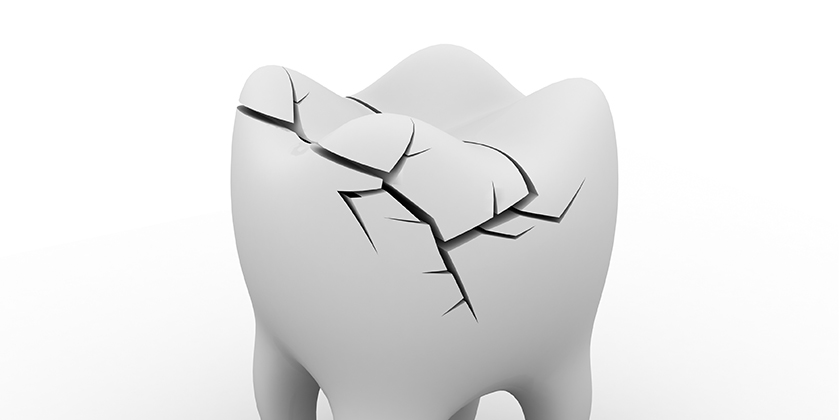Cracked tooth syndrome refers to a condition where a patient’s tooth has cracked but all parts of the tooth are still attached together. The symptoms of cracked tooth syndrome vary greatly, making this a very difficult condition to diagnose. Many experts refer to this condition as the Greenstick Fracture and is classified as a type of dental trauma. What are the signs and symptoms of cracked tooth syndrome?
Signs and Symptoms
One of the first and important signs is pain when pressure is applied and released on the affected tooth (such as biting on an object with the affected tooth). Patients may also feel pain if the food they are chewing has hard elements in it such as seed. Often, the pain is brief and fleeting and occurs when the bite force is released. People having this problem often feel pain when taking very hot or very cold beverages and sometimes when taking sugary food. Patients may or may not be able to trace the pain to the affected tooth. If left untreated, the problem may extend to the root of the tooth and develops into periapical periodontitis. This often leads to the complete loss of the tooth.
How it is Diagnosed
Cracked tooth syndrome is often diagnosed by taking various factors into consideration. The pattern of pain when biting can mimic many other conditions including TMJ disorders or even sinusitis so diagnosis often takes a while. Often the cracks are too tiny to be seen during a dental exam so several techniques are employed to arrive at a definitive conclusion One of those is the use of Gentian or Methylene blue stains which take a few days to confirm a diagnosis. The downside to this approach is that it may weaken the structural integrity of the affected tooth and a temporary restorative procedure is often required. Another approach is transillumination where a fiber optic light is directed at the tooth. Under magnification, the cracks in the dentine interrupt the transmission of the light and the crack becomes more visible. A simple way to confirm the diagnosis is a bite test where patients are given something to bite on and diagnosis is confirmed if pain occurs on release of pressure.
Treatment
There are several ways to treat a case of cracked tooth syndrome but most of the treatment processes involve preventing the expansion of the cracks. A bonding material may be applied to prevent the crack from expanding or growing. Some other treatment approaches use a band that is placed around the tooth to prevent movement or flexing of the tooth. If pain persists, the dentist may opt to do a root canal to relieve the patient of the pain. The last option when all else fails is extraction of the cracked tooth and replacement with an implant and a crown.
If you are in New York and suspect that you have cracked tooth syndrome, you should book an appointment with the premier dental expert in New York City. Dr. Alex Rubinov has years of experience dealing with cracked tooth syndrome among many other dental issues. Contact the practice at (718) 253-0800 for an appointment.

